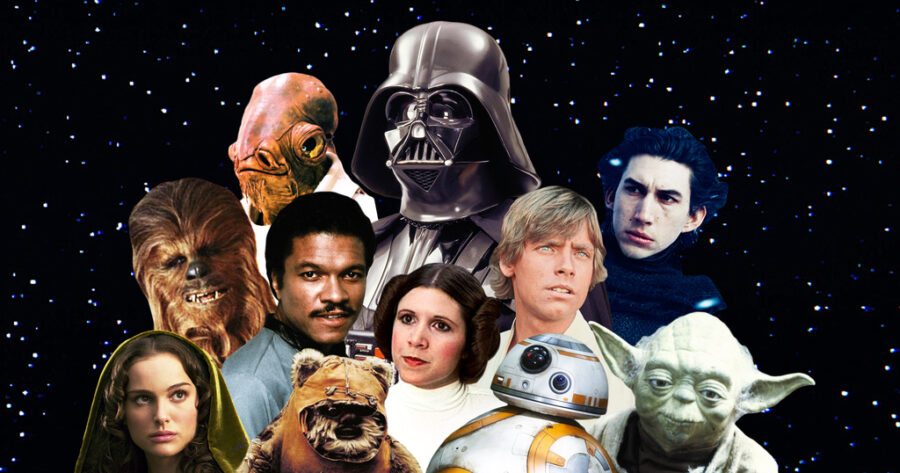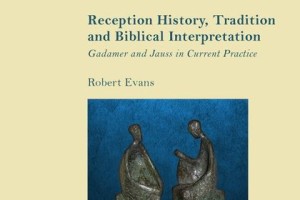If you were going to introduce the Star Wars saga to someone who has never seen the movies, how would you do it? Since there are two trilogies that were not produced in chronological order a true dilemma emerges. I just read a brilliant article by Rod Hilton addressing this topic. I highly recommend that you check this article out (click here to read it). Hilton suggests that the two most intuitive ways to watch the two trilogies together — production order (IV, V, IV, I, II, III) and chronological order (I, II, III, IV, V, VI) — are each fraught with problems. So he proposes an alternative order (IV, V, I, II, III, VI). In this order the prequel trilogy functions narrativally as flashback and back story to the main story (the original trilogy). Then Hilton goes further in a daring way. He suggests another alternative order — called Machete Order — that leaves out Episode I: The Phantom Menace. Thus, his proposed order is IV, V, II, III, VI. Here is the order visually:
Hilton offers several narratival benefits of this particular story-arch, which I won’t address here since you can read it yourself (and you really ought to!). I think this proposal is the best I’ve ever seen. My only quibble is that I prefer Episode I to Episode II, but again, I completely see the narratival benefit of Machete Order.
This discussion about Star Wars brings up a very important question about canon and canonical ordering. By leaving out Episode I Hilton isn’t suggesting that he finds it non-canonical. Rather, he is emphasizing that the story-arch does not need Episode I to tell the main narrative. Additionally, it is entirely appropriate to restructure the viewing order to make the story more coherent and meaningful.
Of course, if a narrative is written in a straightforward and chronological manner, like the seven-part series of Harry Potter, then there is no reason to alter the canonical order. The problem of Star Wars is similar to The Chronicles of Narnia in this regard. Since the Narnian tales do not follow a linear progression it is necessary to decide whether one will read the series in publication order (The Lion, the Witch and the Wardrobe; Prince Caspian; The Voyage of the Dawn Treader; The Silver Chair; The Horse and His Boy; The Magician’s Nephew; The Last Battle) or chronological order (Magician’s Nephew; The Lion, the Witch and the Wardrobe; The Horse and His Boy; Prince Caspian; The Voyage of the Dawn Treader; The Silver Chair; The Last Battle). The two canonical orderings couldn’t be more diverse and one can naturally see how the shape of the canon greatly affects the reading experience. Should readers really enter the world of Narnia with the creation of Narnia by Aslan in The Magician’s Nephew, or should that tale provide meaningful back story as the penultimate sequence in the narrative before The Last Battle? Personally, I believe that everyone should enter Narnia the same way Peter, Susan, Lucy, and Edmond did: through the Wardrobe.
So to return again to Star Wars, if one were to try to watch the movies in chronological order (I, II, III, IV, V, VI) the twist of ‘Luke, I am your father’ would completely lose its shock value. Clearly canonical order matters, and this is true for any literary corpus, especially those with disparate genres and chronological sequences.
The Biblical Canon
This brings our discussion of canons generally to the biblical canon. Being an eclectic compilation of sources from multiple authors, this question is particularly relevant. In the Protestant world our canon consists of 39 books of the OT and 27 books of the NT. The biblical canons of Roman Catholics and the Eastern Orthodox contain additional books, and most of us are more or less familiar with that fact, but what about different canonical orderings?
For instance, the most notable differences can be seen in the ordering of the OT. In the Hebrew canon (Masoretic Text) the OT has three divisions: the Law, the Prophets, and the Writings. The standard Protestant canon on the other hand — which follows the Greek Septuagint to an extent — is ordered this way: the Law, the Historical Books, Wisdom Literature, and Prophetic books. A couple major differences occur between these two canonical orderings that affect the reader. For instance, in the Hebrew canon I and II Kings are considered prophetic texts and are situated directly prior to Isaiah. This helps the reader make connections between the prophetic career of Isaiah depicted in 2 Kings with the opening of Isaiah’s oracle: “…in the days of Uzziah, Jotham, Ahaz, and Hezekiah, kings of Judah” (Isaiah 1.1). Likewise, the story of Ruth is situated directly after Proverbs which naturally leads the reader to make associations between the woman described in Proverbs 31 and Ruth. In an antithetical matter, the story of Esther is situated in between Lamentations and Daniel in a manner that juxtaposes faithful responses to exile with unfaithful ones (e.g. Esther and Mordecai). For a full defense of this see my four part series on Esther (Part 1; Part 2; Part 3; Part 4). More examples could be proliferated from the OT but the point should be plain.
Additionally, similar observations could be made about the NT. The standard NT canon begins with Four Gospels about Jesus the Messiah. By structuring the NT in this way it is very clear that Jesus is the central subject. Intriguingly, if the NT canon opened with the earliest Christian documents, the Christian story, and the overall thrust of the NT canon, could be made a bit ambiguous for the reader. For instance, the earliest Christian writings we have are from the Apostle Paul. It is often suggested that 1 Thessalonians is the earliest of them all, but I suggest that this title belongs to Galatians, which I date to 49 AD. Regardless, these letters obviously presuppose an entire gospel message that the original audience would have known. Thus, for modern readers, separated from the original settings of these apostolic letters, the Four Gospels at the front of the NT canon function to orient the readers to the story of Jesus in a way that also fills in the gaps caused by epistolary selectivity. Additionally, placing Acts prior to Paul’s letters also helps the reader situate his letter writing within his apostolic career.
Lastly, one final observation regarding the biblical canon is the overall structure of Genesis through Revelation. By placing these two books at the beginning and end of the canon one can see that the entire corpus is to be read through the lens of creation and new creation. Furthermore, the focus of the canon appears to center around God’s presence among his people. In the Garden of Eden mankind dwelt in the presence of God among his creation (Gen 1-3) and in the new creation God will once again dwell among his people (Rev 21-22). These are the bookends of the biblical canon and they greatly affect how we read it.
Conclusion
Whether it’s Star Wars or the Bible, canonical order has a tremendous affect on the reader/viewer. But canonical shape isn’t about correctness. It simply changes the overall experience. I hope you’ll read Rod Hilton’s article on Star Wars and get as excited as I am about introducing newcomers in his proposed order. But let’s also realize how this discussion goes beyond Star Wars. The question of canon is obviously a major discussion for Christians too. So let us also reflect on the relationship of the biblical books within the canon as we read our Bibles.






5 Comments
Leave your reply.